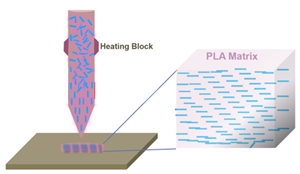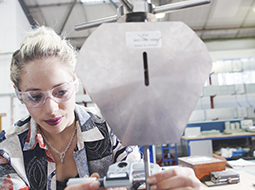-
Study
-
Quick Links
- Open Days & Events
- Real-World Learning
- Unlock Your Potential
- Tuition Fees, Funding & Scholarships
- Real World Learning
-
Undergraduate
- Application Guides
- UCAS Exhibitions
- Extended Degrees
- School & College Outreach
- Information for Parents
-
Postgraduate
- Application Guide
- Postgraduate Research Degrees
- Flexible Learning
- Change Direction
- Register your Interest
-
Student Life
- Students' Union
- The Hub - Student Blog
- Accommodation
- Northumbria Sport
- Support for Students
-
Learning Experience
- Real-World Learning
- Research-enriched learning
- Graduate Futures
- The Business Clinic
- Study Abroad
-
-
International
International
Northumbria’s global footprint touches every continent across the world, through our global partnerships across 17 institutions in 10 countries, to our 277,000 strong alumni community and 150 recruitment partners – we prepare our students for the challenges of tomorrow. Discover more about how to join Northumbria’s global family or our partnerships.
View our Global Footprint-
Quick Links
- Course Search
- Undergraduate Study
- Postgraduate Study
- Information for Parents
- London Campus
- Northumbria Pathway
- Cost of Living
- Sign up for Information
-
International Students
- Information for International Students
- Northumbria and your Country
- International Events
- Application Guide
- Entry Requirements and Education Country Agents
- Global Offices and Regional Teams
- English Requirements
- English Language Centre
- International student support
- Cost of Living
-
International Fees and Funding
- International Undergraduate Fees
- International Undergraduate Funding
- International Masters Fees
- International Masters Funding
- International Postgraduate Research Fees
- International Postgraduate Research Funding
- Useful Financial Information
-
International Partners
- Agent and Representatives Network
- Global Partnerships
- Global Community
-
International Mobility
- Study Abroad
- Information for Incoming Exchange Students
-
-
Business
Business
The world is changing faster than ever before. The future is there to be won by organisations who find ways to turn today's possibilities into tomorrows competitive edge. In a connected world, collaboration can be the key to success.
More on our Business Services-
Business Quick Links
- Contact Us
- Business Events
- Research and Consultancy
- Education and Training
- Workforce Development Courses
- Join our mailing list
-
Education and Training
- Higher and Degree Apprenticeships
- Continuing Professional Development
- Apprenticeship Fees & Funding
- Apprenticeship FAQs
- How to Develop an Apprentice
- Apprenticeship Vacancies
- Enquire Now
-
Research and Consultancy
- Space
- Energy
- AI and Tech
- CHASE: Centre for Health and Social Equity
- NESST
-
-
Research
Research
Northumbria is a research-rich, business-focused, professional university with a global reputation for academic quality. We conduct ground-breaking research that is responsive to the science & technology, health & well being, economic and social and arts & cultural needs for the communities
Discover more about our Research-
Quick Links
- Research Peaks of Excellence
- Academic Departments
- Research Staff
- Postgraduate Research Studentships
- Research Events
-
Research at Northumbria
- Interdisciplinary Research Themes
- Research Impact
- REF
- Partners and Collaborators
-
Support for Researchers
- Research and Innovation Services Staff
- Researcher Development and Training
- Ethics, Integrity, and Trusted Research
- University Library
- Vice Chancellors Fellows
-
Research Degrees
- Postgraduate Research Overview
- Doctoral Training Partnerships and Centres
- Academic Departments
-
Research Culture
- Research Culture
- Research Culture Action Plan
- Concordats and Commitments
-
-
About Us
-
About Northumbria
- Our Strategy
- Our Staff
- Our Schools
- Place and Partnerships
- Leadership & Governance
- University Services
- Northumbria History
- Contact us
- Online Shop
-
-
Alumni
Alumni
Northumbria University is renowned for the calibre of its business-ready graduates. Our alumni network has over 253,000 graduates based in 178 countries worldwide in a range of sectors, our alumni are making a real impact on the world.
Our Alumni - Work For Us
Additive Manufacturing of Hybrid Functional Composites
 4D printing employs 3D printing techniques to create materials
that can transform their shape in response to stimuli like heat, light, or
moisture. This innovation has led to the development of simple actuating shapes
with programmable functionality, offering great potential in areas such as soft
robotics, biomedical devices, and wearable technology. For instance, adaptable
fabrics with programmable stiffness could enable advanced therapeutic functionality
in exoskeletons. Despite the exciting possibilities, the field of 4D printing
is still in its infancy, with limited stimuli and mechanically weak structures
with slow response times. The lack of multi-scale sophistication in the design
and modeling of actuators is also a challenge, making it difficult to create
more complex designs. Moreover, the 4D printing platforms themselves lack the
necessary precision to spatially control material composition and function at
the nanoscale level, hindering the integration of designs from chemistry to
mechanics on a macroscale.
4D printing employs 3D printing techniques to create materials
that can transform their shape in response to stimuli like heat, light, or
moisture. This innovation has led to the development of simple actuating shapes
with programmable functionality, offering great potential in areas such as soft
robotics, biomedical devices, and wearable technology. For instance, adaptable
fabrics with programmable stiffness could enable advanced therapeutic functionality
in exoskeletons. Despite the exciting possibilities, the field of 4D printing
is still in its infancy, with limited stimuli and mechanically weak structures
with slow response times. The lack of multi-scale sophistication in the design
and modeling of actuators is also a challenge, making it difficult to create
more complex designs. Moreover, the 4D printing platforms themselves lack the
necessary precision to spatially control material composition and function at
the nanoscale level, hindering the integration of designs from chemistry to
mechanics on a macroscale.
One of the key aspects of the research will be synthesising and characterising the hybrid materials to determine the chemical, physical, and mechanical properties of the materials. This information will provide valuable insight into the materials' suitability for sensing applications. The next step will be to explore system design and integration to identify the best ways to integrate the functional materials into sensors to achieve the desired functional performance.
Overall, the success of the proposed research will depend on a deep understanding of the materials and their properties, as well as careful consideration of the processing parameters and integration techniques used. By developing innovative, hybrid materials for sensing applications, this research has the potential to contribute to a more sustainable future while also advancing the field of materials science.
Faculty: Engineering and Environment
Department: Mechanical and Construction Engineering
Principal Supervisor: Dr. Jibran Khaliq
Recent publications by supervisors relevant to this project
- C Li, Y Meng, H Hou, A Zhang, J Khaliq, N Liao, C Fu, L Liu, H Du, Journal of the American Ceramic Society. 2023, 1-8
- G. Tselikos, S. Rasul, P. Groen, J. Khaliq, A solvent free additive manufacturing process for in-situ manufacturing and functionalisation of hybrid piezoelectric composites, Polymers, 13, (22) (2021) 3979
- E. Elnabawy, M. Farag, A. Soliman, K. Mahmoud, N. Shehata, R. Nair, I. Kandas, R. Atif, M. Combrinck, J. Khaliq, I. Shyha, A. Kilic, A. H Hassanin, Journal of Applied Polymer Science 138 (45), (2021) 51322
- J Khaliq, T Hoeks, P Groen, Journal of Manufacturing and Materials Processing 3 (3), 2019, 77
- C. Li, H. Xiang, M. Xu, J. Khaliq, J. Chen, L. Fang, Journal of the American Ceramic Society 101 (2), 2020 773-781
- J. Khaliq, J. A. C. Frescas, P. Vollenberg, T. Hoeks, S. van der Zwaag, P. Groen, Ceramics International, 2017, 43 (2), 2774
Eligibility and How to Apply
Qualification
Applicants with degrees in Materials Science/Engineering, Physics, Chemistry, Process Engineering or a related subject with a materials component will be preferred. Knowledge of fundamental electrical engineering is highly desirable. Students who are not UK/EU residents are eligible to apply, provided they hold the relevant academic qualifications, together with an IELTS score of at least 6.5. This project is well suited to motivated and hard-working candidates with a keen interest in design, materials and manufacturing. The applicant should have excellent communication skills including proven ability to write in English.
For more information and informal enquiries please contact Dr. Jibran Khaliq
Further details of the application process and entry requirements can be found here: https://www.northumbria.ac.uk/research/postgraduate-research-degrees/how-to-apply
Deadline for applications: 1st December for March (following year) start; 1st July for October (same year) start.
Start Dates: March and October of each year
Researchers within our Future Engineering multidisciplinary research theme are exploring what technologies will be heating our homes and driving our cars in 20 years time.
Get an insight into life at Northumbria with videos and 360 panoramas of the Department of Mechanical and Construction Engineering.




